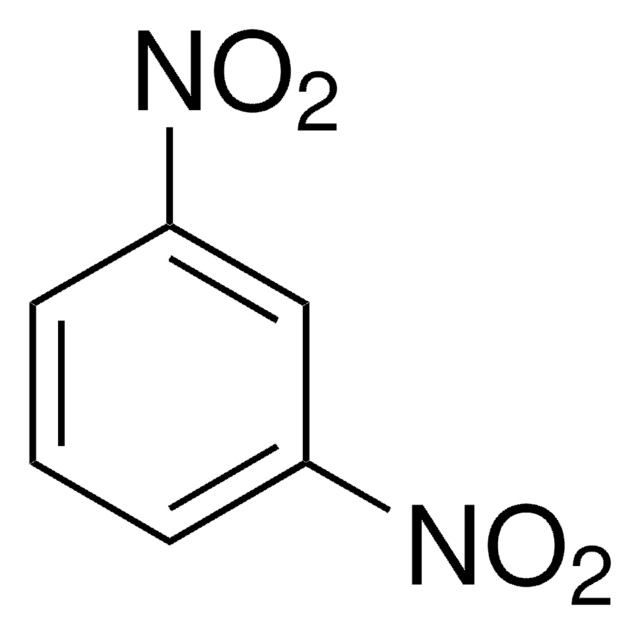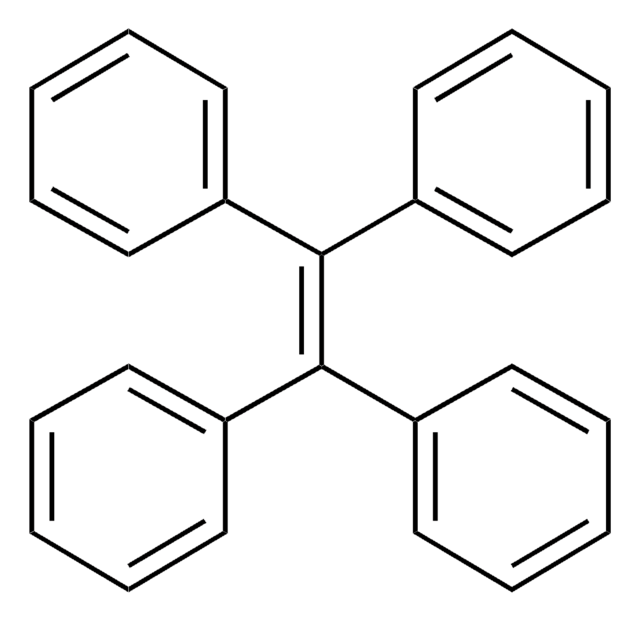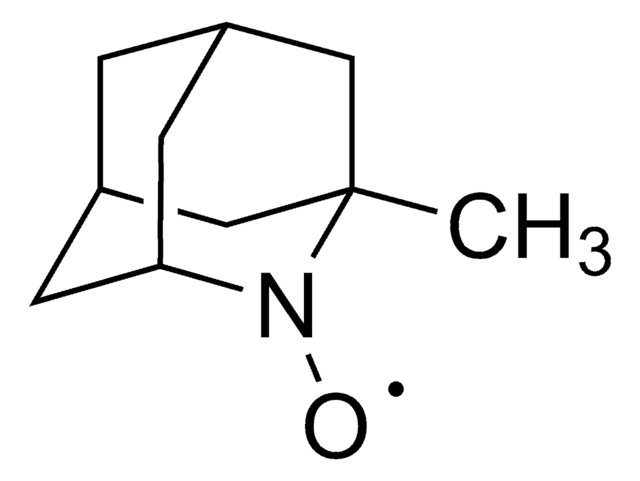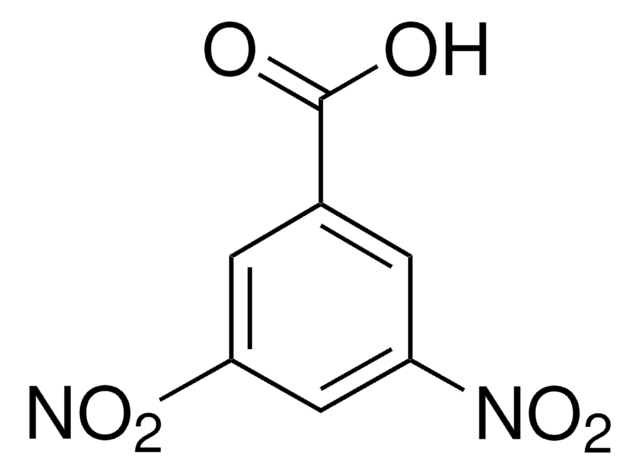126632
1,2-Dinitrobenzene
97%
Synonyme(s) :
o-Dinitrobenzene
About This Item
Produits recommandés
Niveau de qualité
Essai
97%
Forme
solid
pb
319 °C/773 mmHg (lit.)
Pf
114-117 °C (lit.)
Groupe fonctionnel
nitro
Chaîne SMILES
[O-][N+](=O)c1ccccc1[N+]([O-])=O
InChI
1S/C6H4N2O4/c9-7(10)5-3-1-2-4-6(5)8(11)12/h1-4H
Clé InChI
IZUKQUVSCNEFMJ-UHFFFAOYSA-N
Vous recherchez des produits similaires ? Visite Guide de comparaison des produits
Catégories apparentées
Description générale
Application
- A highly divergent Pictet-Spengler approach for pyrrolo quinoxalines from aryl amine using 1,2-dinitrobenzene as an oxidant: Discusses the utility of 1,2-dinitrobenzene as an oxidant in organic synthesis, relevant for developing novel pharmaceuticals (Pardeshi et al., 2019).
Mention d'avertissement
Danger
Mentions de danger
Conseils de prudence
Classification des risques
Acute Tox. 1 Dermal - Acute Tox. 2 Inhalation - Acute Tox. 2 Oral - Aquatic Acute 1 - Aquatic Chronic 1 - STOT RE 2
Code de la classe de stockage
6.1A - Combustible acute toxic Cat. 1 and 2 / very toxic hazardous materials
Classe de danger pour l'eau (WGK)
WGK 3
Point d'éclair (°F)
302.0 °F - closed cup
Point d'éclair (°C)
150 °C - closed cup
Faites votre choix parmi les versions les plus récentes :
Déjà en possession de ce produit ?
Retrouvez la documentation relative aux produits que vous avez récemment achetés dans la Bibliothèque de documents.
Notre équipe de scientifiques dispose d'une expérience dans tous les secteurs de la recherche, notamment en sciences de la vie, science des matériaux, synthèse chimique, chromatographie, analyse et dans de nombreux autres domaines..
Contacter notre Service technique










